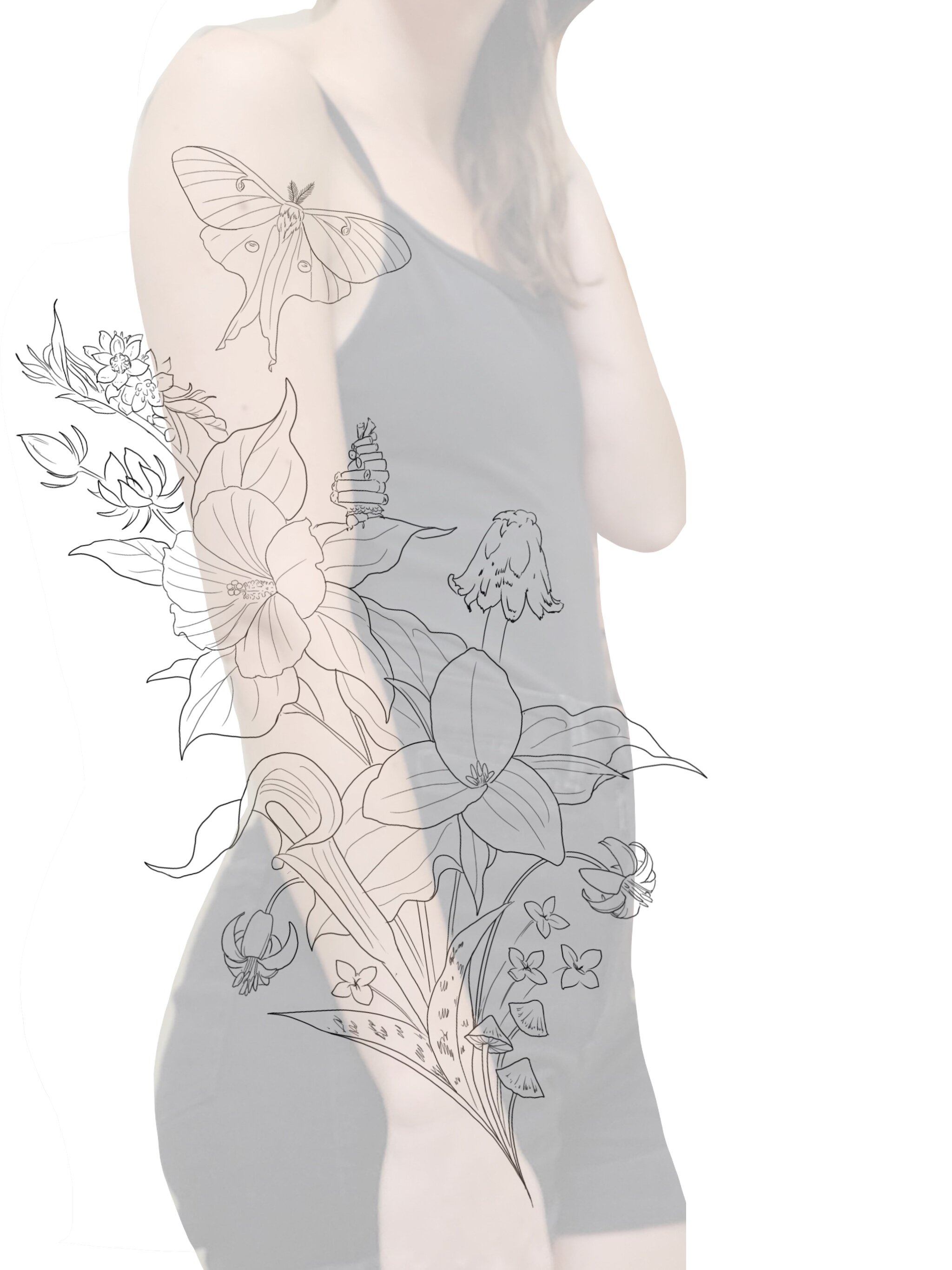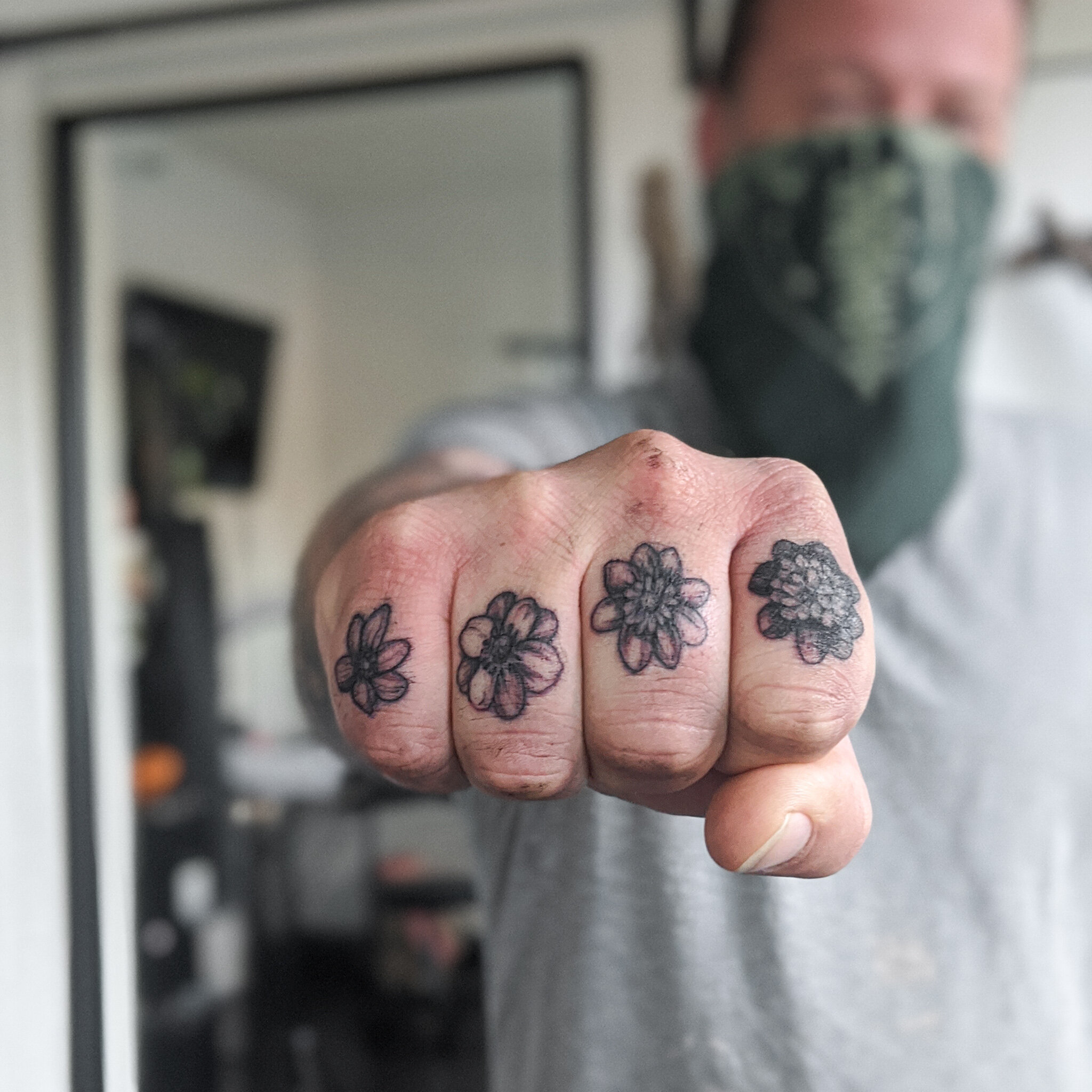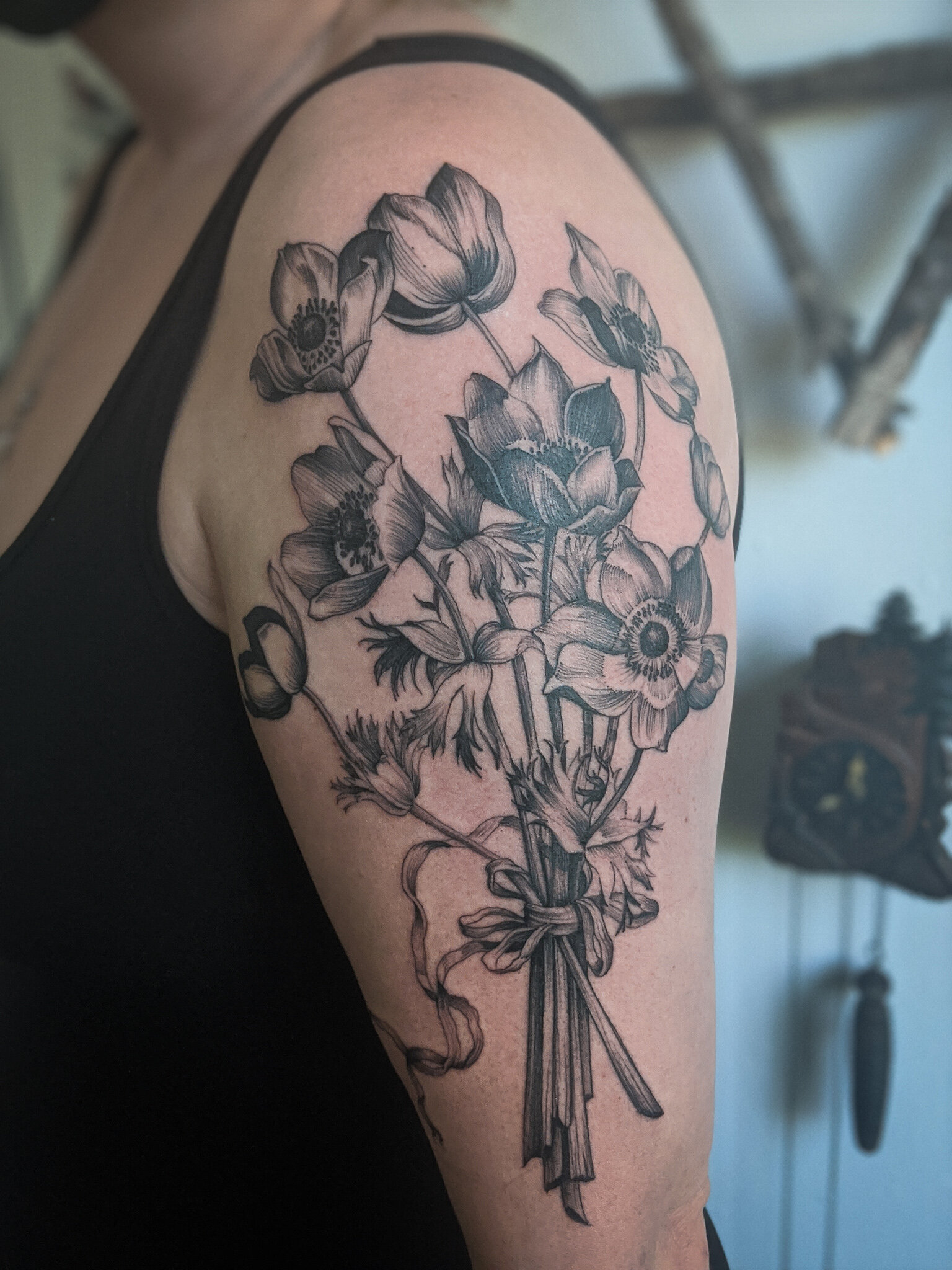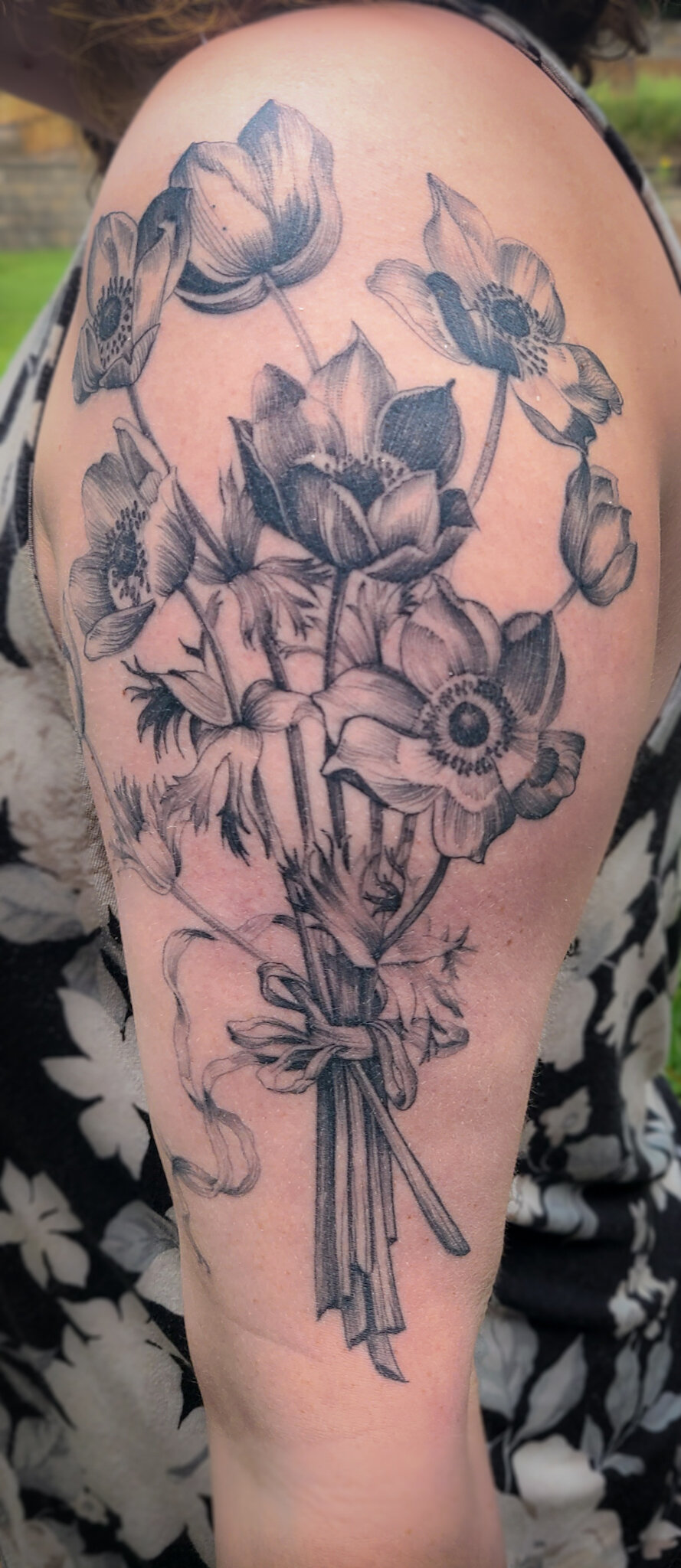Inside the Process of a Custom Sleeve, from Proposal to Completion
/I adore projects inspired by specific ecosystems. There is something very poignant about getting to commemorate them in a “forever” medium at a time when the ecosystems themselves are absolutely in flux. They’re an invitation for the wearer to have important conversations about our fragile earth with folks who inquire, if they so choose. Maybe one day, they’ll even serve as a memento mori honoring worlds past. Either way, here’s a peek inside the process of one of my recent favorites:
L’s Ohio native species sleeve!
L’s sleeve is a perfect example of the ideal custom sleeve process. They came to me with a well-honed vision, elements of my work that they’re drawn to, options for me to choose from, and trusted me to take the reins on the details. This piece took three sessions total of around four hours each (a typical sleeve runs more in the ballpark of five sessions, but this one has so much negative space we were able to bang it out faster); each one a pleasure. Thank you for being such a joy to work with, L!
The Original Proposal:
“I am looking to get an Ohio natural history sleeve. Wildflowers: Ghost pipe, EARLY blue cohosh (the early makes a huge difference), wild hyacinth, wild geranium, bloodroot, jack in the pulpit, wild bergamot, trout lily, large-flowered trillium, swamp rose mallow, skunk cabbage, bluets, wild ginger, bloodroot Fungi: turkey tail, shaggy mane, coral, blushing rosette, old man of the woods, cokers amanita, chicken of the woods, mycena Moths: Cecropia, giant leopard moth, luna moth, rosy maple moth, bagworm moth cocoon I am open to you picking and choosing flora and fauna from the list and creating whatever you see as best fit! Thanks for the opportunity to submit a tattoo request. I am absolutely in love with your work and use of placement and negative space.”*
*Included species in italics, design elements they love in bold
The mockup/stencil
After sessions 1 + 2, which we did over two days back to back. If you’re a traveling client looking to cut down on the trips you have to make, this is always an option!











